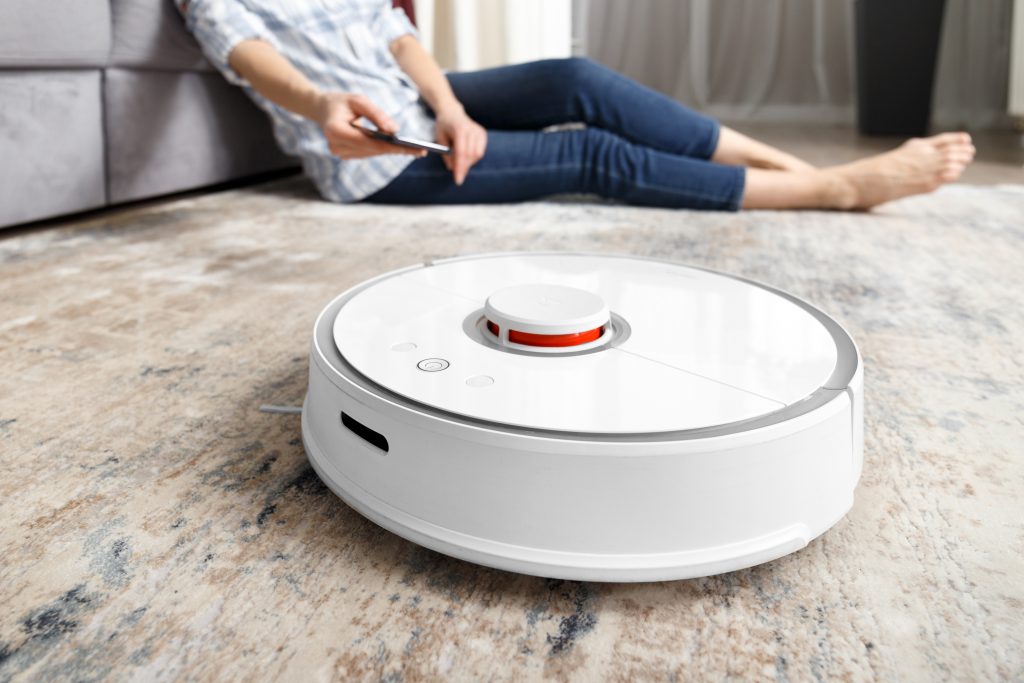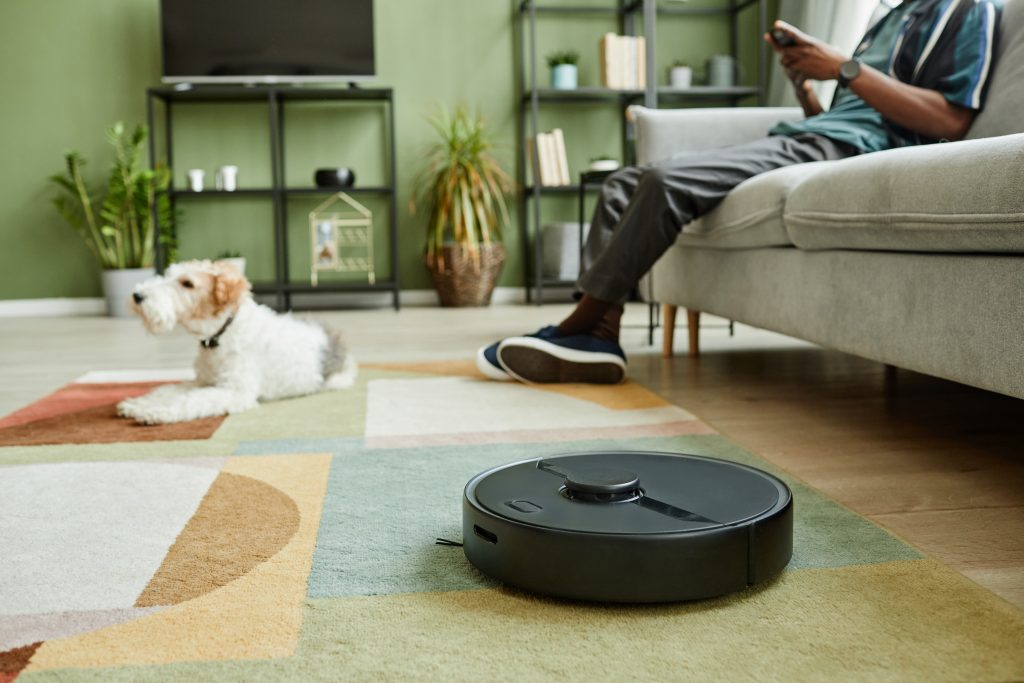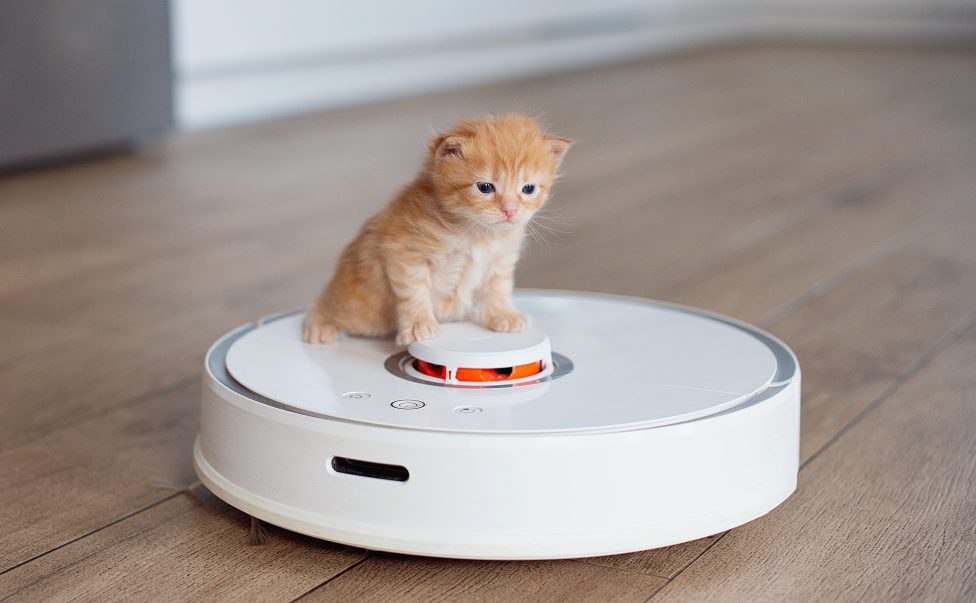What are the pros and cons of robot vacuum? Is it really worth it?
A top-notch robot vacuum is truly remarkable. It effortlessly navigates through your home or apartment, manoeuvring around obstacles like cords, furniture, and pets to thoroughly clean every nook and cranny. Some models even boast self-emptying capabilities, ensuring a hassle-free cleaning experience. And what’s your role in all of this? Well, pretty much nothing.
Many people opt for a robot vacuum over traditional cordless or stand-up vacuums because they believe it’s entirely self-sufficient, handling everything from charging itself to diligently eliminating dust and dander. Sounds perfect, right? Well, not quite.
While robot vacuums do offer a convenient, hands-free cleaning solution that fits seamlessly into any lifestyle, budget, and home size, they aren’t entirely self-reliant, unfortunately.
In this article, we’ll explore the pros and cons of robot vacuums to help you determine if they’re truly worth the investment for you.
What is the lifespan of a robot vacuum?
The lifespan of a robot vacuum can vary depending on several factors such as usage frequency, maintenance, build quality, and brand. On average, a well-maintained robot vacuum can last anywhere from 3 to 5 years. However, some high-end models with superior build quality and advanced features may last longer, possibly up to 7 years or more with proper care. Regular cleaning, emptying the dustbin, and replacing worn-out parts can help prolong the lifespan of a robot vacuum.

What are the advantages of robot vacuum?
Robot vacuums offer several advantages:
- Convenience: One of the biggest benefits of robot vacuums is their convenience. They can clean your floors automatically, allowing you to focus on other tasks or simply relax while they do the work.
- Time-saving: Since robot vacuums operate autonomously, they save you time and effort by handling the vacuuming chores for you. You can schedule them to clean at specific times, ensuring your floors stay clean without requiring your direct involvement.
- Accessibility: Robot vacuums can reach tight spaces and areas that are difficult to access with traditional vacuum cleaners. Their low-profile design allows them to clean under furniture, beds, and other obstacles without much difficulty.
- Consistent cleaning: Robot vacuums use intelligent navigation systems to systematically clean your floors, ensuring thorough coverage and consistent cleaning results. They can detect obstacles and adjust their cleaning patterns accordingly to avoid missing spots.
- Versatility: Many robot vacuums come with various cleaning modes and features such as scheduling, virtual boundaries, and mapping capabilities, allowing you to customize their operation to suit your needs and preferences.
- Allergy-friendly: Some robot vacuums come equipped with high-efficiency particulate air (HEPA) filters, which can capture allergens such as dust, pet dander, and pollen, making them ideal for allergy sufferers.
- Maintenance reminders: Some advanced robot vacuums can alert you when they need maintenance or when their dustbin is full, ensuring optimal performance with minimal effort on your part.
Overall, robot vacuums offer a convenient and efficient way to keep your floors clean with minimal time and effort required from you.
Now let’s check out the downside…

What are the disadvantages of robot vacuum?
While robot vacuums offer many benefits, they also have some drawbacks:
- Limited suction power: Compared to traditional upright or canister vacuums, robot vacuums generally have less suction power. This can result in less effective cleaning, especially on high-pile carpets or heavily soiled areas.
- Battery life and charging time: Robot vacuums rely on rechargeable batteries, which means they have limited cleaning time before needing to recharge. Additionally, some models may take several hours to recharge fully, which can be inconvenient if you have a large area to clean.
- Navigation limitations: While many robot vacuums use advanced navigation systems, they may still struggle with certain obstacles or complex floor layouts. They can get stuck on rugs, cords, or small obstacles, requiring occasional intervention or adjustments to your home’s layout.
- Maintenance requirements: Robot vacuums require regular maintenance, including emptying the dustbin, cleaning the brushes and filters, and occasionally replacing worn-out parts. Failure to maintain your robot vacuum properly can lead to reduced performance and lifespan.
- Initial cost: Robot vacuums typically have a higher upfront cost compared to traditional vacuum cleaners. While prices have become more affordable in recent years, high-end models with advanced features can still be relatively expensive.
- Not suitable for all floor types: Some robot vacuums may struggle to clean certain types of flooring, such as thick carpets or uneven surfaces. Additionally, they may not be able to handle large debris as effectively as traditional vacuums.
- Lack of deep cleaning: Robot vacuums are designed for maintenance cleaning rather than deep cleaning. While they can help keep your floors tidy on a day-to-day basis, they may not be as effective at removing embedded dirt or stains as manual vacuuming.
Despite these drawbacks, many people find that the convenience and time-saving benefits of robot vacuums outweigh the limitations, especially for everyday cleaning tasks.

How to clean your robot vacuum
Cleaning your robot vacuum regularly is essential to maintain its performance and prolong its lifespan. Here’s a general guide on how to clean your robot vacuum:
- Empty the dustbin: After each cleaning cycle or whenever the dustbin is full, empty it to prevent debris from building up and affecting the vacuum’s suction power.
- Clean the brushes: Remove any hair, string, or debris wrapped around the brush rollers or bristles. You can use scissors, a cleaning tool provided with the vacuum, or a brush to remove the tangled hair and debris.
- Clean the filter: If your robot vacuum has a filter, remove it according to the manufacturer’s instructions and clean it. Some filters are washable, while others may need to be replaced periodically. Cleaning the filter helps maintain optimal airflow and suction.
- Wipe the sensors: Dust and debris can accumulate on the sensors, affecting the vacuum’s navigation and obstacle detection capabilities. Use a soft, dry cloth to gently wipe the sensors clean.
- Inspect the wheels: Check the wheels for any hair, string, or debris that may be wrapped around them. Clean the wheels thoroughly to ensure smooth operation and navigation.
- Check the charging contacts: Make sure the charging contacts on both the vacuum and the charging dock are clean and free of debris. Wipe them with a clean, dry cloth if necessary to ensure a good connection for charging.
- Clean the exterior: Wipe down the exterior of the robot vacuum with a damp cloth to remove any dust or dirt buildup.
- Schedule maintenance tasks: Some robot vacuums come with maintenance reminders or companion apps that help you schedule regular cleaning and maintenance tasks. Follow the manufacturer’s recommendations for optimal performance.
- Perform deeper cleaning as needed: Occasionally, you may need to perform deeper cleaning tasks, such as removing and cleaning the brush assembly or disassembling the vacuum for more thorough cleaning. Refer to the user manual for specific instructions on deep cleaning your model of robot vacuum.
Is robot vacuum worth it?
Whether a robot vacuum is worth it depends on your individual circumstances, lifestyle, and preferences. Here are some factors to consider when determining if a robot vacuum is worth the investment:
- Convenience: Robot vacuums offer unparalleled convenience by automating the vacuuming process. If you lead a busy lifestyle or simply prefer to spend your time on other tasks, a robot vacuum can save you time and effort by handling the vacuuming chores for you.
- Time-saving: With a robot vacuum, you can schedule cleaning sessions to occur automatically, even when you’re not at home. This can help you maintain cleaner floors with minimal intervention, freeing up your time for other activities.
- Accessibility: Robot vacuums can reach areas that are difficult to access with traditional vacuum cleaners, such as under furniture and beds. Their low-profile design allows them to clean effectively in tight spaces without requiring you to move heavy furniture.
- Consistent cleaning: Many robot vacuums use intelligent navigation systems to systematically clean your floors, ensuring thorough coverage and consistent cleaning results. They can detect obstacles and adjust their cleaning patterns to avoid missing spots.
- Versatility: Robot vacuums come with various cleaning modes and features, allowing you to customize their operation to suit your needs and preferences. Some models offer mapping capabilities, virtual boundaries, and advanced scheduling options for greater flexibility.
- Allergy-friendly: Some robot vacuums come equipped with HEPA filters, which can capture allergens like dust, pet dander, and pollen, making them ideal for allergy sufferers.
- Initial cost vs. long-term savings: While robot vacuums typically have a higher upfront cost compared to traditional vacuum cleaners, they can potentially save you money in the long run by reducing the need for manual vacuuming and professional cleaning services.
Ultimately, whether a robot vacuum is worth it depends on how much value you place on the convenience, time-saving benefits, and improved cleanliness it offers. If you prioritize these factors and can afford the initial investment, a robot vacuum may be a worthwhile addition to your home.
The bottom line
In summary, regardless of your lifestyle—whether you work remotely, travel often, live independently, or have a bustling household with pets—robot vacuums offer a convenient solution to your cleaning needs, especially on timber flooring. While they promise to simplify your life, they do require some upkeep to function effectively. By dedicating just a few minutes each week to maintenance tasks, you can ensure that your robot vacuum operates smoothly for years to come, maximizing the value of your investment.


